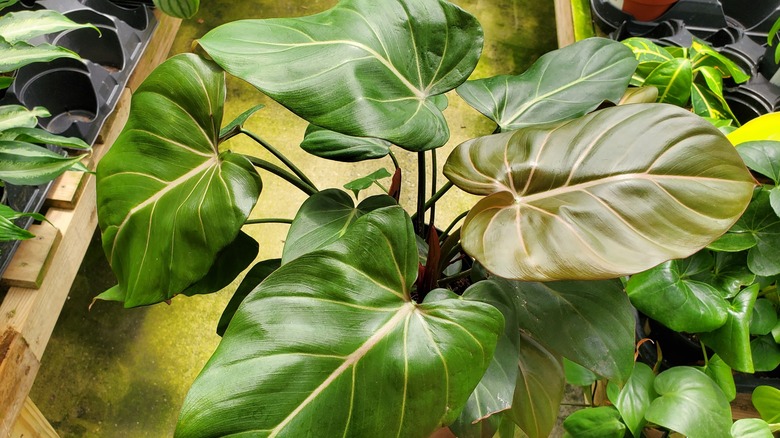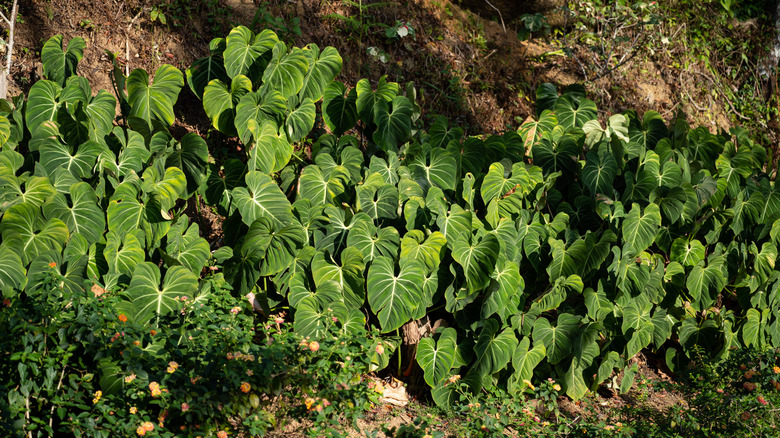Is A Philodendron Summer Glory A Crawling Or Vining Plant, And What's The Difference?
Before you grab a philodendron summer glory from the nursery for its bronze and glossy green leaves, know that there's more to the plant than meets the eye. The philodendron summer glory is just one of 450 varieties of philodendron that come from the family Araceae. They make for beautiful houseplants, but each variety of philodendron is categorized by its unique growing habit. This is a trait not to be overlooked in the plant because knowing these habits determines the direction in which the plant grows.
How your philodendron grows will dictate its care requirements, like whether they need a large amount of space or a support like a trellis. Philodendrons can generally be classified into two types. Those that grow vertically are vining (climbing) types and those that grow horizontally are crawling (non-climbing) types. The philodendron summer glory is a crawler, so you can expect it to grow wide and bushy rather than long and tall.
Crawling vs. vining philodendrons
Crawling and vining types of philodendron can be confusing to identify at first and there are some key differences between the two. When a philodendron is the crawling type, this means it grows close to the ground and extends horizontally along the soil. This growth habit is a result of a stolon, which is the type of stem that crawling philodendrons have. The stolon is slender and grows along the ground providing roots and vertical branches. This is where the leaves of a crawling philodendron sprout from, providing the plant with its lengthy growth pattern. Crawlers can also be identified by their wide, heart shaped leaves. Philodendron gloriosum, philodendron mamei, and philodendron plowmanii are a few other crawling varieties.
Vining, on the other hand, describes philodendrons that like to climb onto a support like a trellis or drape down to the floor, perhaps from a stunning DIY hanging planter. Climbers have stems that grow like vines with leaves shooting out of the leafstalk. You may also notice tube-like limbs growing from the plant. These are aerial roots that give the plant the ability latch onto a trellis or other support. Examples of vining types include philodendron melanochrysum, philodendron bernardopazii, and philodendron bipennifolium.
Caring for philodendron summer glory
If you've decided to move forward with growing a philodendron summer glory in your home, there are some key things to note in order to care for it properly. Crawling types that are planted indoors benefit from being placed in long, shallow pots with adequate water drainage since root rot may occur in the philodendron summer glory when it's overwatered. Because of this, leave some time between waterings until the top inch of soil is dry. You may even want to add drainage holes to your plant pots if they don't have any.
Additionally, if you find yourself with limited space to provide for your summer glory to thrive horizontally, don't let that stop you! With some training, you can encourage crawling philodendrons to grow like climbing philodendrons. Though crawlers won't reach the same heights as true climbing types, as long as you provide something to support their upward expansion, the plant will grow vertically.

